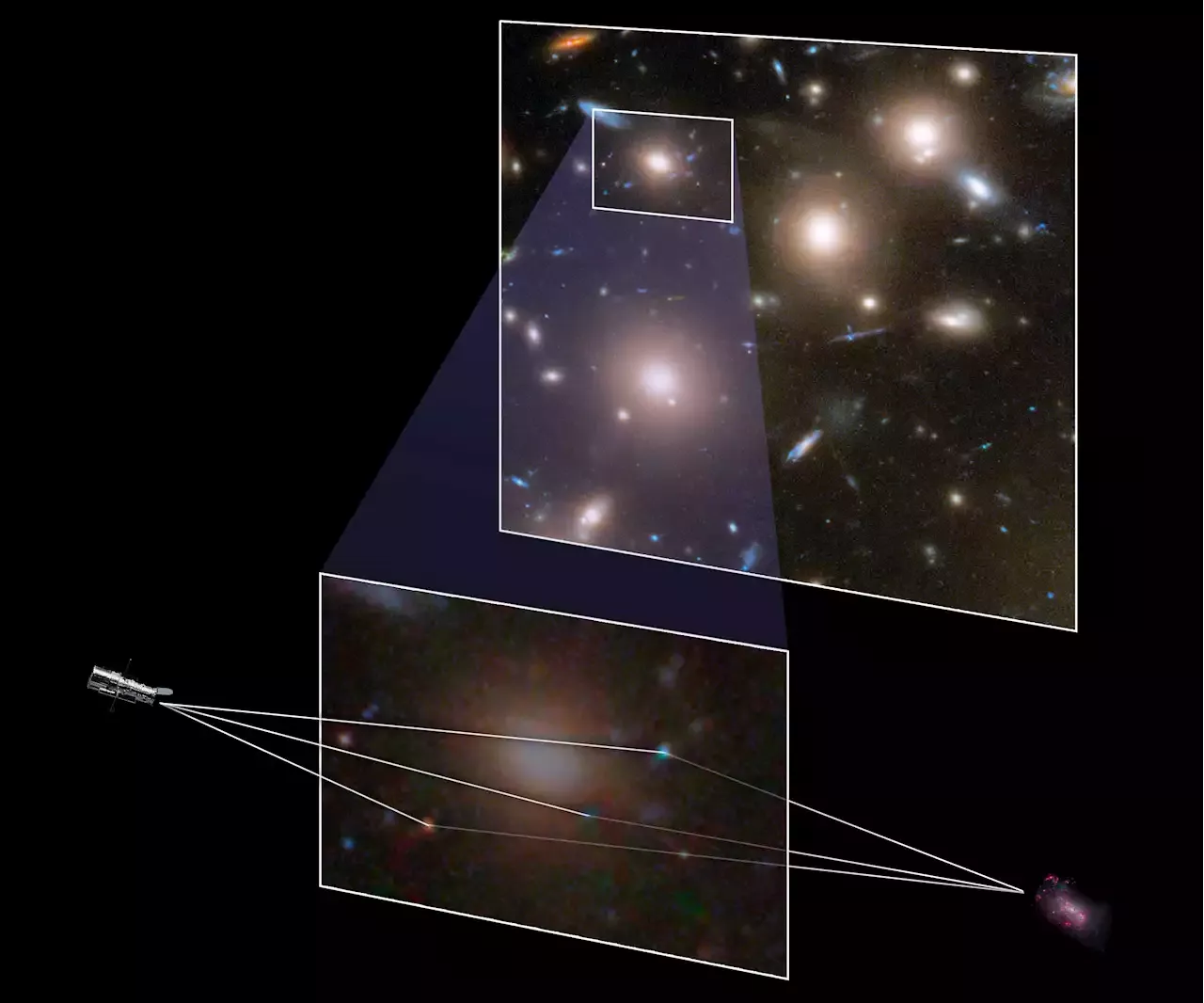Blast from the Past Caught in Episodes Due to Gravitational Lensing Light from a star that exploded over 11 billion years ago was captured by the Hubble Space Telescope. It was not just one postcard from the remote past but three messages that chronicle the fading fireball over a period of one week
Through a phenomenon called gravitational lensing, three different moments in a far-off supernova explosion were captured in a single snapshot by NASA’s Hubble Space Telescope. The light from the supernova, which was located behind the galaxy cluster Abell 370, was multiply lensed by the cluster’s immense gravity. Credit: NASA, ESA, STScI, Wenlei Chen , Patrick Kelly , Hubble Frontier FieldsLight from a star that exploded over 11 billion years ago was captured by the.
A bonus for astronomers is that not one but three images of the supernova appear in the photo, strung along the cluster. They show the explosion over different times that all arrived at Hubble simultaneously. A clue is that the cooling supernova fireball appears in slightly different colors among the supernova images. The images arrived at different times because the length of the pathways the supernova light followed is different.
NASA’s Hubble Space Telescope captured three different moments in a far-off supernova explosion in a single snapshot. When the star exploded more than 11 billion years ago, the universe was less than a fifth of its current age of 13.8 billion years.so early in the universe’s history. The research could help scientists learn more about the formation of stars and galaxies in the early universe. The supernova images are also special because they show the early stages of a stellar explosion.
United States Latest News, United States Headlines
Similar News:You can also read news stories similar to this one that we have collected from other news sources.
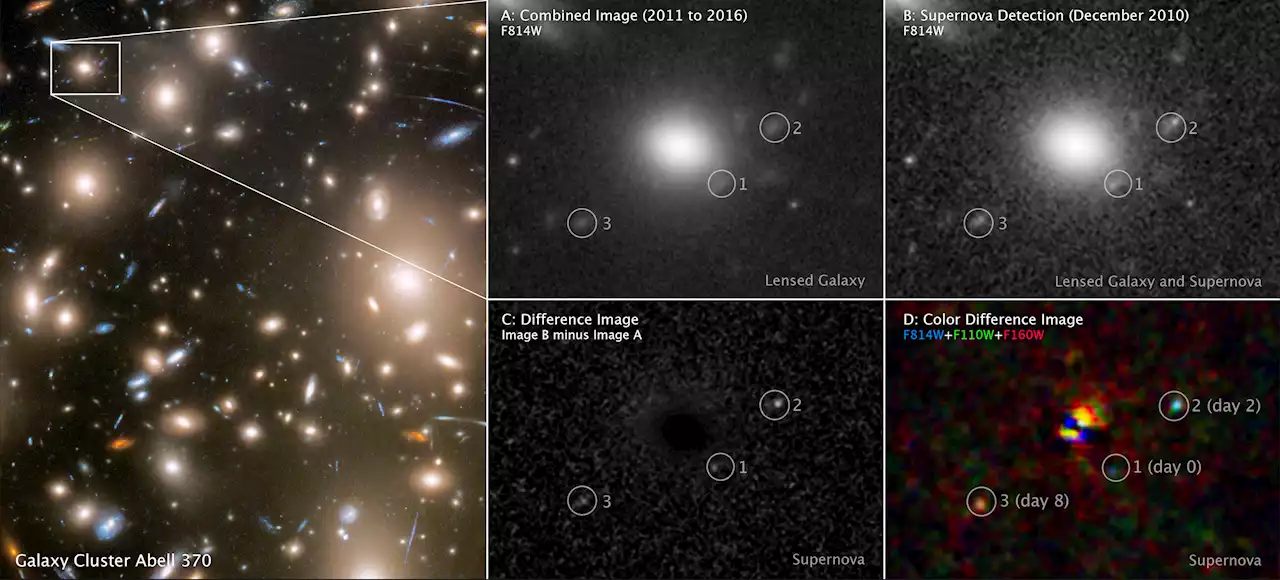 Red-supergiant supernova images reveal secrets of an earlier universeAn international research team led by the University of Minnesota Twin Cities has measured the size of a star dating back 2 billion years after the Big Bang, or more than 11 billion years ago. Detailed images show the exploding star cooling and could help scientists learn more about the stars and galaxies present in the early universe. The paper is published in Nature.
Red-supergiant supernova images reveal secrets of an earlier universeAn international research team led by the University of Minnesota Twin Cities has measured the size of a star dating back 2 billion years after the Big Bang, or more than 11 billion years ago. Detailed images show the exploding star cooling and could help scientists learn more about the stars and galaxies present in the early universe. The paper is published in Nature.
Read more »
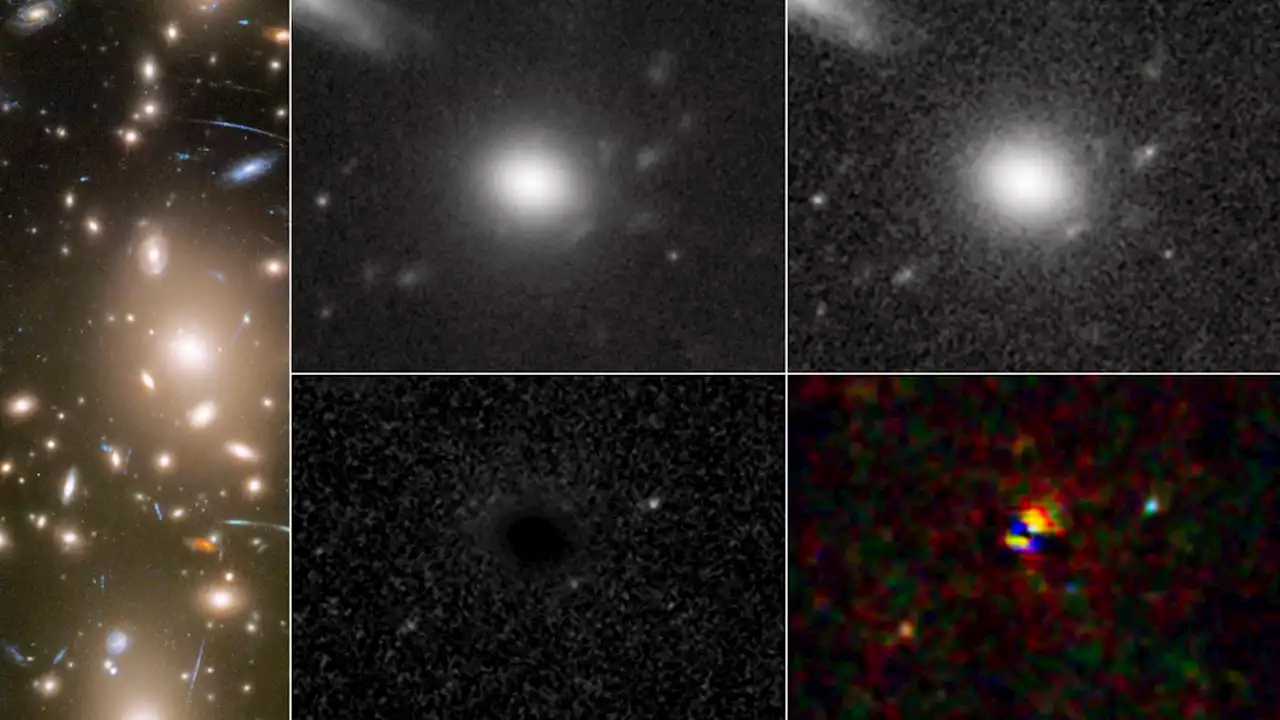 Hubble Telescope captures 'stellar explosion' of star from over 11 billion years agoThe supernova, about 500 times larger than the sun, is the first detailed look of its kind so early into the history of the universe.
Hubble Telescope captures 'stellar explosion' of star from over 11 billion years agoThe supernova, about 500 times larger than the sun, is the first detailed look of its kind so early into the history of the universe.
Read more »
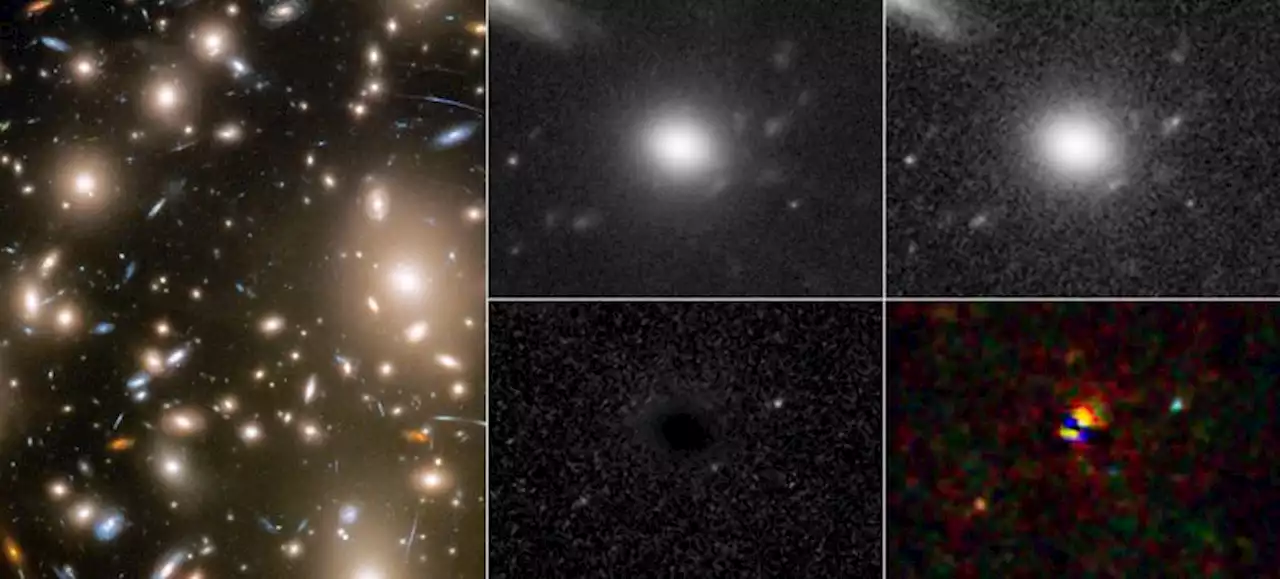 Hubble telescope reveals huge star's explosion in blow-by-blow detailAbout 11.5 billion years ago, a distant star roughly 530 times larger than our sun died in a cataclysmic explosion that blew its outer layers of gas into the surrounding cosmos, a supernova documented by astronomers in blow-by-blow detail. Researchers on Wednesday said NASA's Hubble Space Telescope managed to capture three separate images spanning a period of eight days starting just hours after the detonation - an achievement even more noteworthy considering how long ago and far away it occurred. The images were discovered in a review of Hubble observation archival data from 2010, according to astronomer Wenlei Chen, a University of Minnesota postdoctoral researcher and lead author of the study published in the journal Nature.
Hubble telescope reveals huge star's explosion in blow-by-blow detailAbout 11.5 billion years ago, a distant star roughly 530 times larger than our sun died in a cataclysmic explosion that blew its outer layers of gas into the surrounding cosmos, a supernova documented by astronomers in blow-by-blow detail. Researchers on Wednesday said NASA's Hubble Space Telescope managed to capture three separate images spanning a period of eight days starting just hours after the detonation - an achievement even more noteworthy considering how long ago and far away it occurred. The images were discovered in a review of Hubble observation archival data from 2010, according to astronomer Wenlei Chen, a University of Minnesota postdoctoral researcher and lead author of the study published in the journal Nature.
Read more »
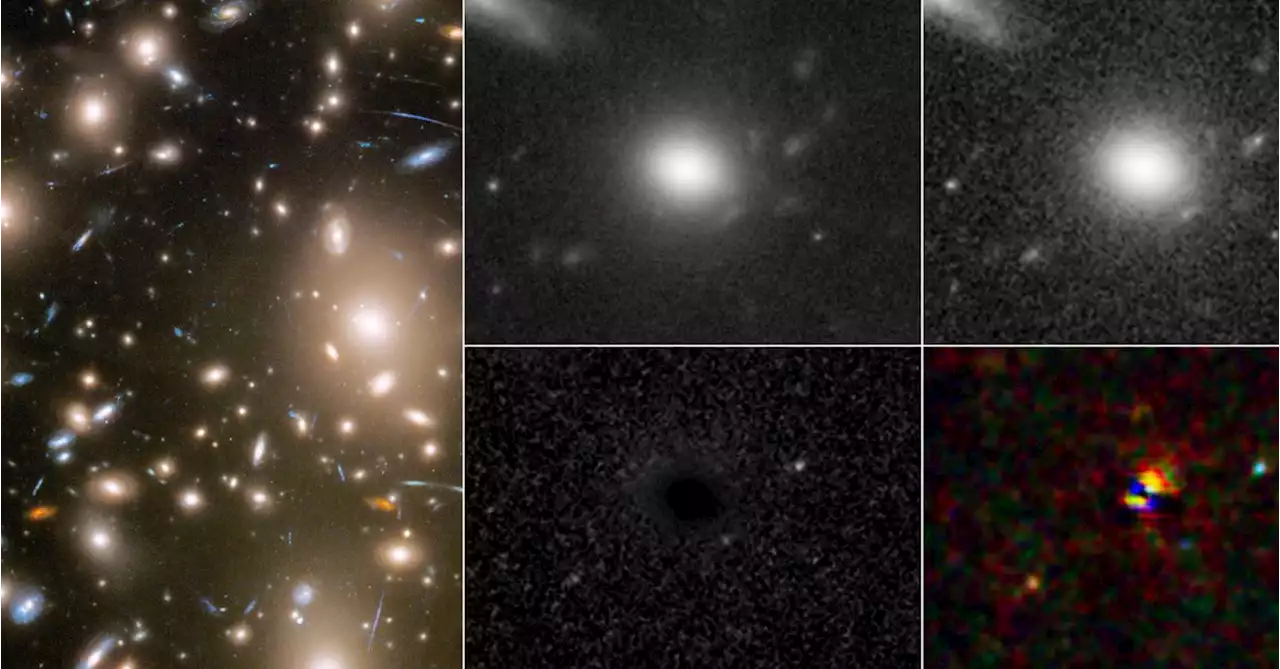 Hubble telescope reveals huge star's explosion in blow-by-blow detailAbout 11.5 billion years ago, a distant star roughly 530 times larger than our sun died in a cataclysmic explosion that blew its outer layers of gas into the surrounding cosmos, a supernova documented by astronomers in blow-by-blow detail.
Hubble telescope reveals huge star's explosion in blow-by-blow detailAbout 11.5 billion years ago, a distant star roughly 530 times larger than our sun died in a cataclysmic explosion that blew its outer layers of gas into the surrounding cosmos, a supernova documented by astronomers in blow-by-blow detail.
Read more »
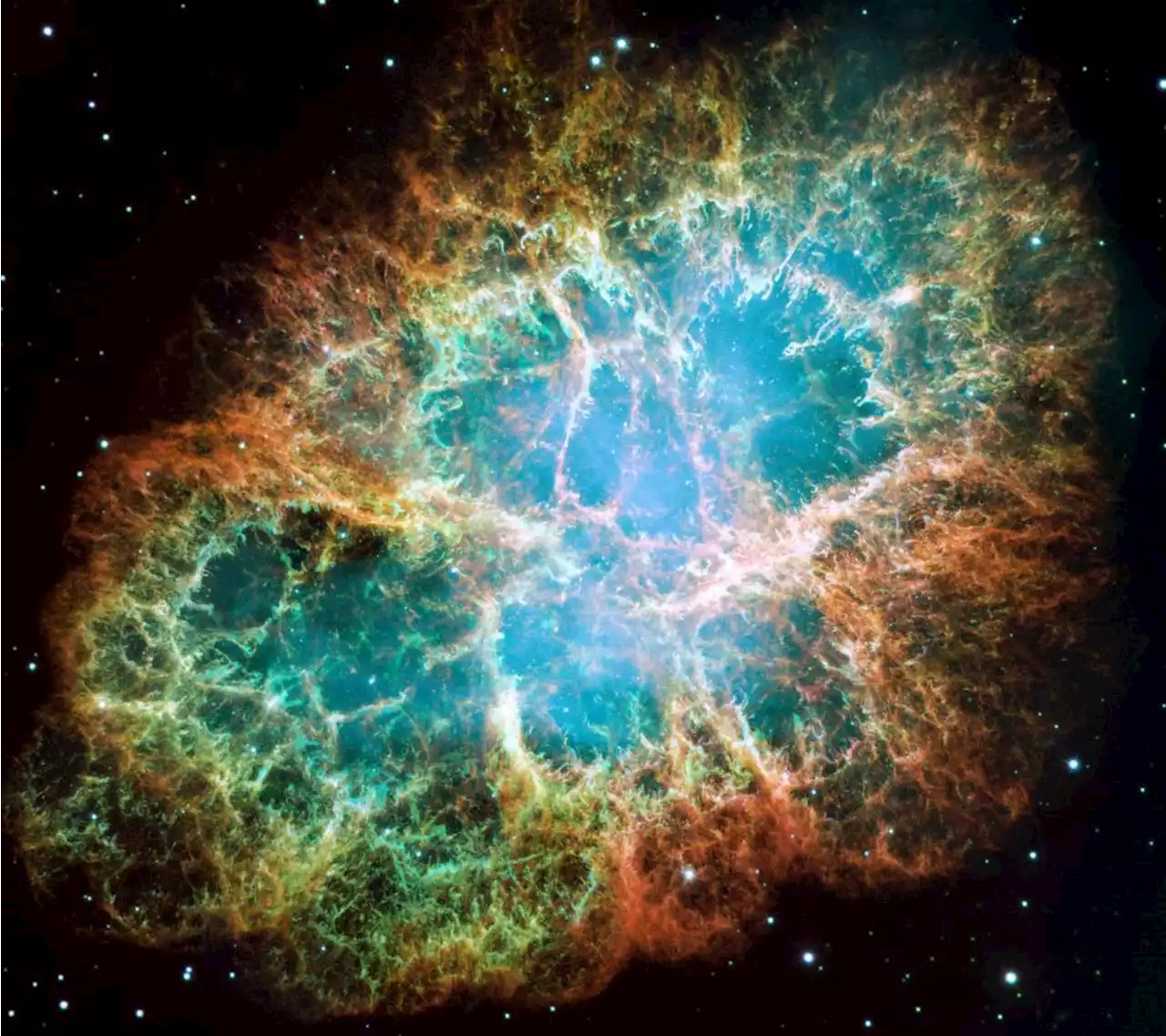 Hubble saw the Same Supernova at Three Different Times Thanks to Gravitational LensingHubble Space Telescope data provides three looks at a supernova in the distant universe at three different times.
Hubble saw the Same Supernova at Three Different Times Thanks to Gravitational LensingHubble Space Telescope data provides three looks at a supernova in the distant universe at three different times.
Read more »
